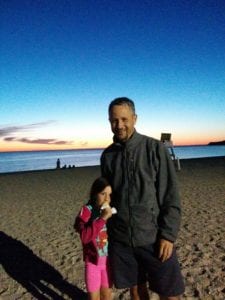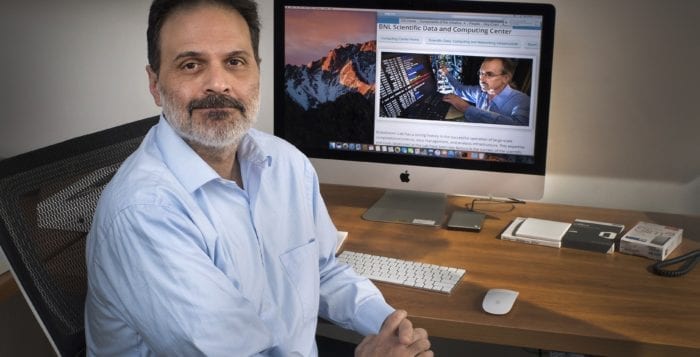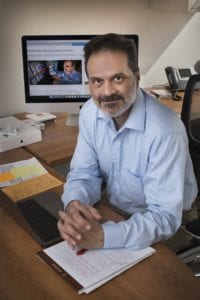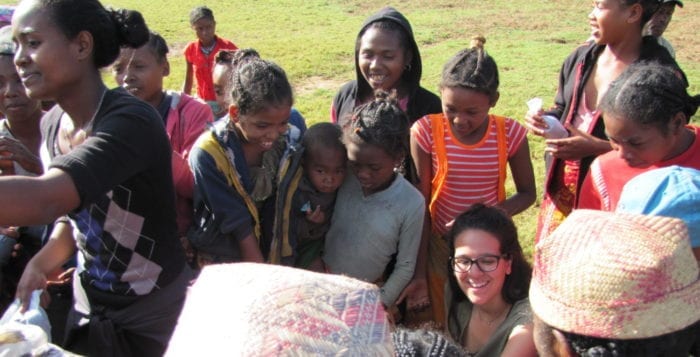By Daniel Dunaief
Sam Aronson, the retired head of Brookhaven National Laboratory, has set his sights on a new project far from Long Island.
Teaming up with Acacia Leakey, the project management and engineering consultant of a company called SOSAED and a member of the famed family that has made seminal discoveries about human evolution in Kenya, Aronson would like to stimulate the growth of businesses through the use of solar power that provides products and services.
“This [part of Africa] is an area where there’s really little infrastructure,” Aronson said. “We’re looking to help people get up on the economic pyramid.”
The people Aronson and Leakey would like to help are representative of the one billion people without access to electric power. Two-thirds of them live in sub-Saharan Africa.
Through SOSAED — which stands for Sustainable Off-grid Solutions for African Economic Development — Aronson and Leakey are working with the Turkana Basin Institute of northern Kenya, Stony Brook University, Strathmore University in Nairobi and other Kenyan educational institutions and businesses to integrate business creation in off-grid areas into the larger Kenyan economic ecosystem.
The group would like to create a business model, using local workers and managers, for a range of companies, Leakey explained.
SOSAED plans to start with a small-scale solar-powered clothing production business, which would create affordable clothing for the heat, including skirts, shirts and shorts. SOSAED expects to build this plant adjacent to the TBI research facility.
Ideally, the manufacturer will make the clothing from local material. The clothing business is a pilot project to see whether the model can work for other types of projects in other areas. The Turkana Basin Institute will provide some of the infrastructure, while SOSAED will acquire the equipment and the raw materials and training to do the work.
SOSAED hopes the project will become “self-sustaining when it’s up and running,” Aronson said. “To be sustainable, it has to be the work of local people.” He hopes what will differentiate this effort from other groups’ attempts to build economic development is the commitment to maintenance by people living and working in the area.
“To an extent, the suitability of technology is rarely rigorously considered when humanitarian or generic development projects are implemented,” Leakey explained in an email. “Not only are the skills required for maintenance an important consideration, the availability of spare parts and the motivation and ability to pay for these are also important.”
Developing a system that includes upkeep by people living and working in the area could “make a project move ahead on its own steam,” Aronson said. The area has limited infrastructure, although some of that is changing as new roads and government-funded water projects begin.
Leakey suggested that a long-term project would need extensive participation of the users in every step of the development and implementation. “The project will likely look very different once complete to how we envisage it now, and part of our success (if it comes) will lie in working in a way which allows a great degree of flexibility as it is unlikely we’ll design the ‘right’ system the first time around,” she explained in an email.
In areas with mature systems, Leakey suggested that some organizations had difficulty changing direction, retrofitting existing systems or adapting new technology. New York, she explained, is struggling to adopt sustainable technologies to the extent that it could. “Legislative and physical infrastructure imposes unfortunate roadblocks in the way of clean technologies,” she wrote in an email. “We’re fortunate that with electricity provision we have a fairly blank slate” in Kenya and that the “Kenya government also recognizes the value of off-grid initiatives.”
Leakey appreciates the support TBI played in helping to create SOSAED and is grateful for the ongoing assistance. Through Stony Brook University, SOSAED is beginning to engage business students on economic questions. In the future, the group may also work with engineering students on technological challenges.
“Research may include developing new productive uses of solar power, optimizing the existing system and using the site to rigorously test technologies developed at Stony Brook,” she explained.
Aronson’s initial interest in this project came from his technological connection to Brookhaven National Laboratory, where he retired as the director in 2015. He has been eager to bring new technology to a population he is confident they can help in a “way that makes sense to them and addresses their needs.”
With the support of the Turkana Basin Institute and Stony Brook, Aronson hopes to have a functioning solar hub and factory near TBI that serves a few surrounding villages within the next 18 months. “That’s a very ambitious goal,” he acknowledged. “We’re working in an environment that, because of the history and development, people you’re trying to serve are somewhat skeptical that you’re serious and that you have the staying power to make something that looks like what you’re talking about work.”
While Aronson and Leakey are continuing to make connections in Kenya with government officials and residents interested in starting businesses, they are searching for ways to make this effort financially viable.
SOSAED is raising money through philanthropic grants and foundations to get the project going. Eventually, they hope to approach venture capital firms who are patient and prepared to invest for the longer term in a number of projects.
After they have an initial example, they will approach other financial backers with more than just a good idea, but with a model they hope will work in other locations.
Aronson lauded the effort and knowledge of Leakey. “We wouldn’t be making much progress right now for a variety of reasons in Kenya if [Leakey] hadn’t come on board,” Aronson said. “I value in the extreme her ability to get the work done.”
SOSAID would like to submit proposals to funding sources that can drive this concept forward.
If this effort takes root, Aronson believes there is a “tremendous market out there.” That would mean this would “become a much bigger organization.”

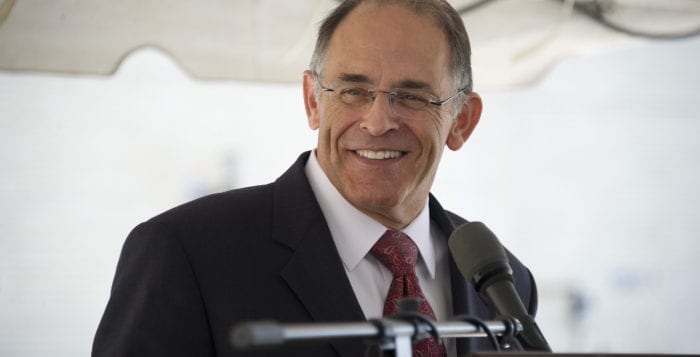
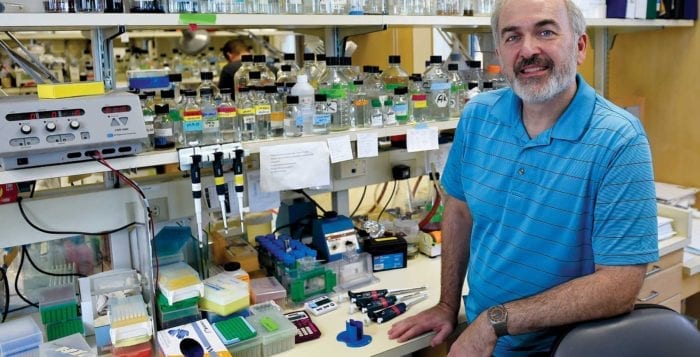
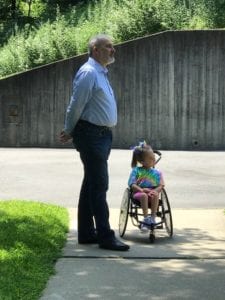
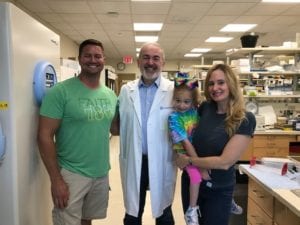
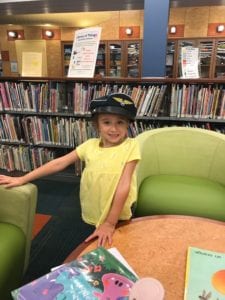
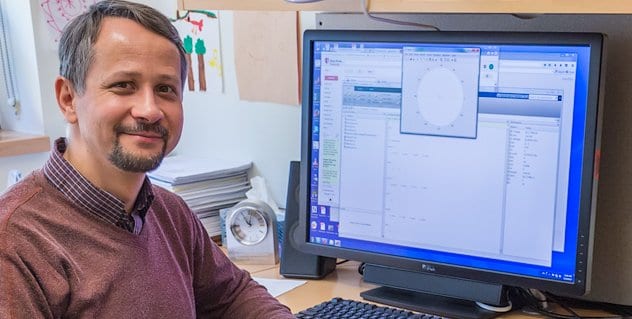
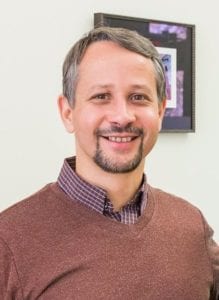 Understanding the basic science of how genes in individual cells respond to temperature differences could have broad applications. In agriculture, farmers might need to know how genes or gene circuits that provide resistance to a pathogen or drought tolerance react when the temperature rises or falls.
Understanding the basic science of how genes in individual cells respond to temperature differences could have broad applications. In agriculture, farmers might need to know how genes or gene circuits that provide resistance to a pathogen or drought tolerance react when the temperature rises or falls.